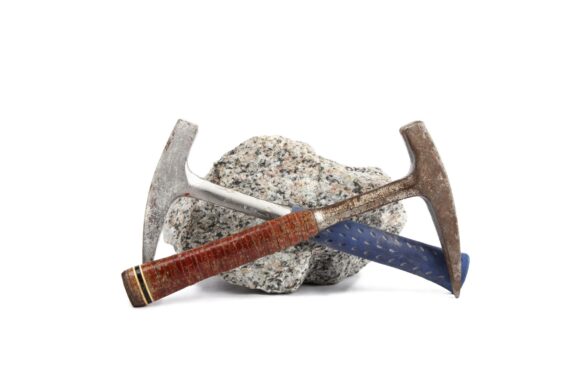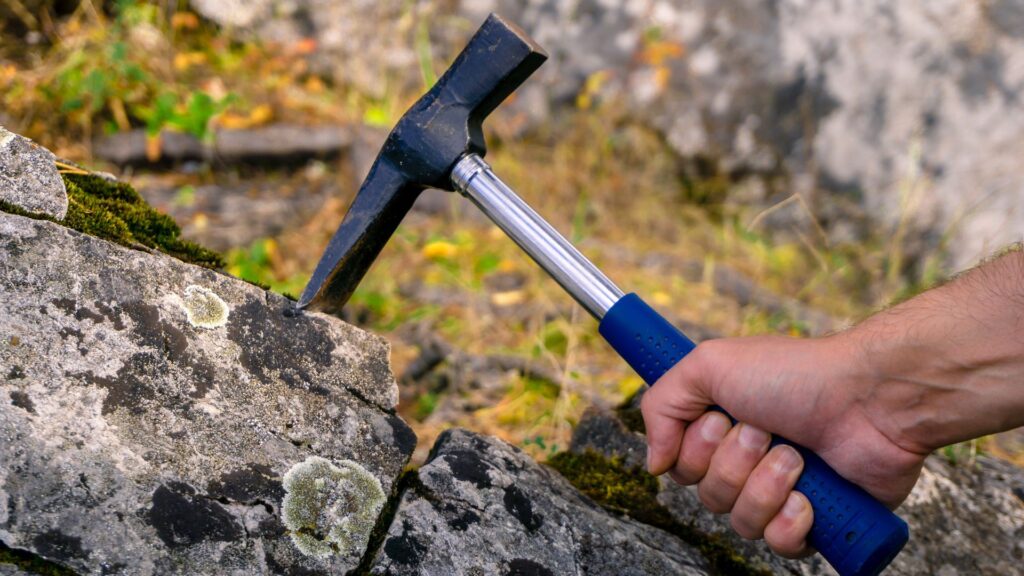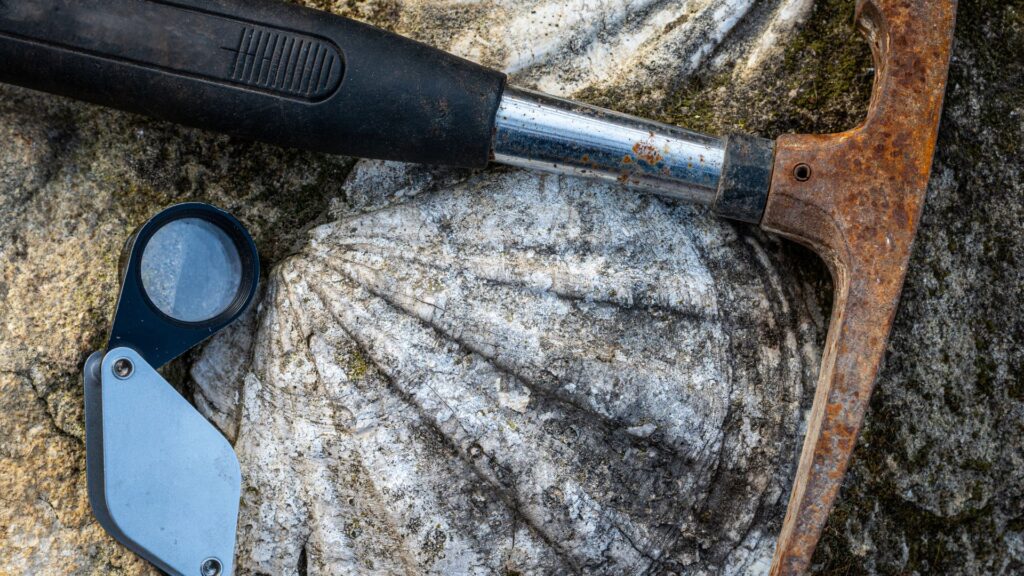What is a Geological Hammer?

Introduction
In the world of geology, certain tools stand as iconic symbols of the trade, and the geological hammer is undoubtedly one of them. This unassuming yet indispensable tool has been the companion of geologists, paleontologists, and archaeologists for centuries, helping them uncover the mysteries hidden within the Earth’s layers.

In this comprehensive article, we will delve deep into the world of geological hammers, exploring their uses, the importance of choosing the right one, safety measures during fieldwork, maintenance tips, and their applications in various scientific disciplines. Whether you’re a seasoned geologist or just starting your journey, join us as we chisel away the layers of knowledge surrounding this fascinating tool.
Choosing the Right Geological Hammer: A Comprehensive Guide
When it comes to geological hammers, not all are created equal. The choice of hammer depends on various factors, including the type of rock you’ll be working with, the specific task at hand, and your own physical capabilities. Let’s dive into the essential aspects of choosing the right geological hammer.
Types of Geological Hammers
There are different types of geological hammers designed for specific purposes. A pick-headed hammer, for instance, is excellent for breaking rocks apart, while a chisel-ended hammer is more suitable for delicate work. Sledgehammer-like variants are used for tougher rocks and larger specimens. Consider your intended use before making a decision.
Weight and Balance
The weight and balance of a geological hammer are crucial. A well-balanced hammer can reduce strain on your arm and wrist during prolonged use. Heavier hammers are useful for tough rocks, but if you’re covering extensive ground, a lighter option might be more practical.
Handle Material
Geological hammer handles are typically made of wood or fiberglass. Wood offers a traditional feel but may break more easily, while fiberglass handles are more durable. Comfort and grip should also be taken into account.
Hammerhead Material
The material of the hammerhead affects its durability and efficiency. Steel heads are common, with hardened steel being more resistant to wear. Carbide-tipped heads are even more robust and suitable for demanding tasks.
Ergonomics
An ergonomic handle with proper grip can significantly enhance your efficiency and reduce the risk of injuries during fieldwork. Consider trying out different handles to find the one that suits your hand size and grip style.
Safety Measures When Using a Geological Hammer in Fieldwork
While the geological hammer is a valuable tool, it’s important to prioritize safety during fieldwork. Rocks can be unpredictable, and improper use of the hammer can lead to accidents. Here are some essential safety measures to keep in mind:
Protective Gear
Always wear appropriate protective gear, including safety glasses, gloves, and steel-toed boots. These items provide a layer of defense against flying rock chips and accidental impacts.
Eye Protection
Your eyes are particularly vulnerable during fieldwork. Safety glasses or goggles shield your eyes from debris, preventing potential injuries.
Body Positioning
Maintain a stable stance and proper body positioning while using the hammer. This minimizes the risk of losing balance and ensures that your strikes are accurate.
Rock Examination
Before striking a rock, examine it for any potential hazards, such as existing cracks or unstable formations. This precautionary step can prevent unexpected fractures that could lead to injury.
Protecting Hearing
The repetitive impact of hammer on rock can damage your hearing over time. Wearing ear protection is essential, especially during prolonged field sessions.
Geological Hammer Maintenance: Prolonging the Lifespan of Your Tool
A well-maintained geological hammer can serve you faithfully for years. Regular maintenance not only prolongs the tool’s lifespan but also ensures your safety during fieldwork. Here’s how to care for your hammer:
Cleaning and Drying
After each field session, clean off dirt and debris from your hammer. Moisture and sediment can lead to corrosion, so ensure that your hammer is thoroughly dried before storage.
Handle Care
Inspect the handle for cracks or splinters. Sand down any rough areas and consider applying a protective finish to prevent further damage.
Hammerhead Maintenance
Regularly inspect the hammerhead for signs of wear or damage. Sharpen chipped edges and oil the head to prevent rust.
Storage
Store your geological hammer in a dry environment, away from direct sunlight. Hanging your hammer or storing it on a rack prevents unnecessary contact that could lead to dents or nicks.

Handle Replacement
If the handle becomes severely damaged, consider replacing it. A cracked handle compromises your safety and the hammer’s effectiveness.
Applications of Geological Hammers in Geology, Paleontology, and Archaeology
The geological hammer is more than just a striking tool; it’s a gateway to unlocking Earth’s history. Its applications extend across various scientific disciplines:
Geology
Geologists use hammers to study rock formations, extract samples, and analyze mineral composition. The hammer’s versatility makes it a staple in both field mapping and laboratory analysis.

Paleontology
Paleontologists use geological hammers to excavate fossils from rock formations. The precision of the hammer’s strikes helps uncover delicate remains without damaging them.
Archaeology
In archaeology, geological hammers are employed to unearth artifacts and analyze layers of sediment. This aids in dating historical sites and understanding past civilizations.
Comparing Geological Hammers: Finding the Perfect One for Your Needs
With a plethora of geological hammers available, finding the perfect one can be overwhelming. Consider the specific requirements of your work, the type of rocks you’ll encounter, and your personal preferences. Here are a few notable options:
Estwing E3-22P Rock Pick
Known for its durability and balance, this pick-headed hammer is suitable for a wide range of geological tasks.
Chisello
Designed for intricate work, the Chisello’s chisel-ended hammerhead is perfect for precise extraction of fossils and delicate specimens.
Fossil Excavation Hammer
This specialized hammer features a pointed tip for meticulous excavation around fossils, making it a favorite among paleontologists.
From Beginner to Expert: Mastering Geological Hammer Techniques
Becoming proficient with a geological hammer requires practice and technique refinement. Here’s a progression from beginner to expert:
Beginner
Start with basic strikes on easily accessible rocks. Focus on accuracy and body positioning.
Intermediate
Experiment with different types of rocks and refine your striking angle. Learn to recognize the right amount of force needed for different materials.
Advanced
Master the art of breaking larger rocks with fewer strikes. Hone your skills in delicate work, such as splitting rocks to reveal hidden layers.
Expert
Develop a deep understanding of rock structures and optimal strike points. Your strikes become precise, and you can read rocks like pages in a book.

Innovations in Geological Tools: The Evolution of the Geological Hammer
As technology advances, so do the tools of geology. Innovations have led to improvements in durability, precision, and data collection.
Conclusion
The geological hammer remains an emblem of scientific exploration and discovery. From choosing the right hammer to mastering its techniques, this unassuming tool has a profound impact on various scientific fields. By adhering to safety measures and proper maintenance, you can ensure that your geological hammer serves you faithfully throughout your journey of uncovering the Earth’s hidden stories.
